Q
What is the cheapest Proton Saga?
Currently, the cheapest version of the Proton Saga is the 1.3L Standard MT manual-transmission model. The official starting price is around RM34,800 (excluding insurance and registration fees). This entry-level model is equipped with a 1.3-liter naturally-aspirated engine that delivers a maximum horsepower of 95PS and a peak torque of 120Nm. It comes with a 5-speed manual transmission and has a fuel consumption of approximately 5.6L/100km. Standard safety features include dual airbags, ABS + EBD, and ISOFIX child seat anchors. Although the Standard MT version has removed some comfort features such as the central control screen and reverse radar, its core mechanical structure is the same as that of the high - end versions, offering excellent value for money. It's especially suitable for consumers with a limited budget who value reliability.
It's worth mentioning that the entire Proton Saga lineup uses a high-strength steel body structure and has achieved a four-star safety rating from ASEAN NCAP. The 1.3L Campro VVT engine has mature technology and low maintenance costs. Supported by the local parts supply system in Malaysia, it has significant long-term cost advantages. As a national car, it also has relatively stable resale value in the used-car market.
If consumers are considering an automatic-transmission model, they can choose the 1.3L Standard AT version (starting at around RM36,800), which is equipped with a Punch CVT transmission, making it ideal for urban driving scenarios.
Special Disclaimer: This content is published by users and does not represent the views or position of PCauto.
Related Q&A
Q
How much does it cost to maintain a Proton Saga 2022?
Based on Proton Saga 2022's official maintenance guidelines and real-world conditions in the Malaysian market, the annual upkeep costs for this car typically range from RM800 to RM1,200, though this figure can vary significantly depending on your annual mileage and the specific services required. Of course, this depends heavily on your mileage and the specific services you opt for. For regular servicing – think oil changes, oil filter replacements, and the basics – you're looking at around RM200 to RM300 per session. When it comes time for a major service, which might involve changing brake fluid, transmission oil, and other key components, expect to shell out between RM500 and RM800.
Being a homegrown Malaysian brand, Proton Saga benefits from relatively affordable零部件 prices and an extensive network of service centers, which definitely helps keep long-term ownership costs in check. Sticking to regular maintenance isn't just about prolonging your car's lifespan; it's crucial for keeping you safe on the road too. We always recommend following the maintenance manual to the letter and choosing authorized Proton service centers – that way, you're guaranteed genuine parts and professional expertise under the hood. And if you're watching your wallet, keep an eye out for Proton's occasional service promotions; they can help you trim those costs even further.
Q
What is the warranty on the 2022 Proton Saga?
The 2022 Proton Saga comes with a solid 5-year or 150,000 km factory warranty (whichever comes first), covering key components like the engine and transmission. The anti-rust warranty stretches to 7 years with unlimited mileage. This warranty package is pretty competitive in Malaysia's compact car segment and should help keep long-term ownership costs in check for drivers.
Important to note though – to keep that warranty valid, you've gotta stick to regular servicing at authorized Proton service centers. Skipping that could void your coverage, so make sure you hold onto all those service records, folks. On top of that, Proton throws in 24-hour roadside assistance for extra peace of mind when you're out and about.
Malaysia's hot and rainy weather can really test a car's durability, so going for a model with a lengthy warranty just makes smart sense. Other local players like Perodua also offer similar long-haul warranty deals, so it's worth shopping around before making your final decision.
Q
What is the resale value of a Proton Saga?
The Proton Saga, one of Malaysia's most beloved budget-friendly sedans, sees its used car value fluctuate pretty noticeably based on the model year, mileage, condition, and market demand. Industry data shows that a 3-year-old Saga typically retains around 50-60% of its original price, and even at 5 years old, it's still holding steady at roughly 40%. That actually outperforms some competitors in its class, thanks to its low maintenance costs, widespread after-sales network, and solid market reputation.
Something to keep in mind: top-spec trims like the Premium S, with their extra features, usually hold 5-8% more value than the base models. And a Saga with a complete, regular service history? That can fetch a 10% premium when you resell. If you're looking to boost your car's resale value, it's smart to hang onto those service records from when it was under the factory warranty and steer clear of major modifications that mess with the original specs.
Also, the Saga's 1.3L engine paired with that tried-and-tested gearbox delivers reliable fuel efficiency – a big checkmark for used car buyers. Malaysia's second-hand car market keeps steady demand for practical, economical rides like the Saga, especially among first-time car owners. So, price it right, and your used Saga should move pretty quick.
Q
Is the 2022 Proton Saga a good first car?
The 2022 Proton Saga makes total sense as a first car. It's got a solid rep in Malaysia for being a great value workhorse – easy on the wallet to buy, even easier to keep running, which is perfect if you're a first-time buyer watching your budget. Under the hood, you've got a 1.3L naturally aspirated engine. Now, it's no rocket ship, but trust me, it's more than enough for zipping around town on your daily commute.
Space-wise, for a small sedan, it's surprisingly roomy. You can squeeze five adults in there without too much hassle, and the boot? A decent 420 liters – plenty for family errands or a weekend getaway. Safety kit? It's got the basics covered: ABS, EBD, and dual airbags. Nothing flashy, but exactly what you'd expect in this price bracket.
One thing that really works for the Saga is Proton's service network. They're all over the country, so getting it serviced or fixed is a breeze. Parts are easy to come by and won't break the bank, which is a big plus when you're just starting out.
Driving it? Super laid-back. The steering is light, the size is just right – not too big, not too small – so navigating tight city streets and squeezing into parking spots is a cinch, even for new drivers. I also dig that they've kept the traditional physical buttons. No messing around with finicky touchscreens for every little thing; you just reach out and press – simple and intuitive. That's a big win for folks who value functionality over fancy tech.
Now, if you're all about the latest gadgets, you might wanna look at something more upmarket. But as an entry-level family car, the 2022 Saga is a really down-to-earth choice. And hey, let's not forget Malaysia's weather – hot and humid with those monsoon downpours. Proton's tweaked the air-con to blow nice and cold, and the body's rust-proofed to handle the elements. It's like they built it specifically for our local conditions. Can't argue with that.
Q
Does the 2022 Proton Saga have push-to-start?
The 2022 Proton Saga doesn't come with push-to-start ignition; this entry-level sedan sticks with the traditional keyed system. The focus here is on practical features instead, like the standard 7-inch touchscreen, Bluetooth connectivity, and reverse camera. For Malaysian buyers, push-to-start is usually reserved for higher-spec models or B-segment and above – you'll find it on the Proton X50 or X70, for example, where it adds that extra layer of convenience.
Sure, it misses out on keyless entry, but the Saga still holds its ground as one of the country's best-selling national cars thanks to its wallet-friendly price tag, impressive fuel economy (5.6L/100km), and Proton's solid after-sales network. If push-to-start is a must-have for you, third-party kits are available, but keep in mind this might affect your factory warranty. Your safest bet? Go through a Proton authorized service center for the retrofit.
Truth be told, in Malaysia's hot and humid climate, a good old mechanical key can be more reliable. That's probably why plenty of budget-friendly cars still stick with this tried-and-tested setup.
Q
How does the 2022 Proton Saga compare to the Perodua Bezza?
Malaysia's favorite B-segment sedans for 2022, the Proton Saga and Perodua Bezza, each bring their own strengths to the table. The Saga packs a 1.3L four-cylinder engine churning out 95PS, paired with a 4AT gearbox. It delivers smooth power delivery and a comfort-tuned chassis, making it a solid family hauler. ABS and dual airbags come standard across the range, with the higher trims adding stability control. The interior leans into practicality, and space-wise, it has the Bezza beat.
On the flip side, the Bezza offers a choice of 1.0L and 1.3L engines. ISOFIX child seat anchors are standard across all variants, and the top-spec model gets the ASA 3.0 driver assistance suite, giving it an edge in tech. However, rear passenger space can feel a bit tight.
Both models tick the boxes for Malaysian buyers looking for economy and practicality. The Saga wins on value-for-money and interior room, while the Bezza shines brighter when it comes to fuel efficiency and active safety tech. It's worth noting both have scored a 4-star ASEAN NCAP safety rating, so you're covered on that front. Ultimately, the choice boils down to your priorities and budget. If you want a bit more engagement behind the wheel, take the Saga for a spin. But if low running costs are your main focus, the Bezza is the way to go.
Q
Is the 2022 Proton Saga comfortable for long drives?
The 2022 Proton Saga, as the entry-level sedan from Malaysia's homegrown brand, delivers a solid but unremarkable performance when it comes to long-distance driving comfort. The seats, featuring ergonomic design with decent lumbar support, handle those typical 4-5 hour interstate drives around Malaysia just fine. However, the rather firm suspension setup does take a slight toll on comfort when tackling bumpy roads. In terms of noise insulation, tire roar becomes noticeable once you exceed 110km/h, but it's still within the acceptable range for its class. For buyers who frequently hit the highway, I'd recommend springing for the higher-spec leather seat variant to up the comfort ante. Also, regular wheel alignments and tire maintenance can really help cut down on long-drive fatigue. If you're dead set on a better long-distance experience within a similar price bracket, you might want to stretch your budget for a B-segment sedan. That said, the Saga still holds its own with strong fuel efficiency and low maintenance costs – its official 5.6L/100km fuel consumption figure is definitely a draw for folks regularly cruising the North-South Expressway.
Q
Does the 2022 Proton Saga support Apple CarPlay and Android Auto?
The 2022 Proton Saga, a key entry-level model from Malaysia's national car brand, does come with a 7-inch touchscreen infotainment system supporting Apple CarPlay and Android Auto in its 1.3L Premium variant. This feature uses a wired USB connection for smartphone mirroring, allowing drivers to safely access common apps like navigation and music on the go. It's worth noting that the base 1.3L Standard trim misses out on this – something shoppers should keep in mind when balancing budget and needs.
Given Malaysia's hot and rainy climate, the Saga's infotainment screen holds up well against glare, and the system's responsiveness has been tuned for local road conditions. A quick tip though: regular cleaning of the USB port is a good idea to prevent connection issues down the line.
Looking at rivals, the 2022 Perodua Bezza only offered similar phone connectivity in its higher-spec trims. Meanwhile, Proton's decision to make reverse camera standard across the Saga range really highlights the brand's focus on practicality. These little differences are definitely worth considering when shopping for an affordable sedan in Malaysia.
Q
What is the horsepower of the 2022 Proton Saga?
Powering the 2022 Proton Saga is a 1.3-liter naturally aspirated four-cylinder engine, cranking out 95 PS and 120 Nm of torque. It pairs with either a 5-speed manual or 4-speed automatic gearbox. As the Malaysian brand's entry-level sedan, this car has won over plenty of family buyers with its wallet-friendly price tag and solid reliability. The horsepower figure might not blow you away, but it's more than enough for daily city drives. Plus, it's pretty fuel-efficient too – perfect if you're watching your budget.
Horsepower is definitely a key metric for engine performance, but real-world driving feel depends on a mix of factors: torque delivery, how well the gearbox works with the engine, and the car's weight. The Saga's tune leans into smoothness and fuel economy, which makes total sense for its position in the market. Even with Malaysia's hilly roads and hot weather, this small-displacement engine holds its own, providing enough oomph when you need it. And let's not forget the low maintenance costs – that's another big reason it stays a hit locally.
Q
What are the safety features in the 2022 Proton Saga?
The 2022 Proton Saga, Malaysia's beloved national car, doesn't skimp on safety, boasting an ASEAN NCAP 4-star rating. Across the range, you're getting dual airbags, ABS with EBD and BA as standard – the essentials you'd expect. Step up to the higher-spec variants, and you'll unlock the added reassurance of ESC (Electronic Stability Control) and TCS (Traction Control System), which do a solid job of keeping things composed when the roads get slippery.
Proton has built the Saga with a high-tensile steel body structure, and they've thrown in ISOFIX child seat anchors too, so it's got both passive safety and family practicality covered. It's worth noting the Saga uses a front-disc, rear-drum brake setup, but paired with some tire grip optimization, it delivers a well-rounded performance for a B-segment sedan.
If your budget stretches that far, I'd definitely recommend going for the version with ESC. It's a game-changer when it comes to reducing skidding risks, and let's be real, that's a big plus in Malaysia's often rainy weather. Competitors like the Perodua Bezza offer similar safety kit these days, so it really comes down to comparing specs and figuring out what best suits your needs.
Latest Q&A
Q
What are the safety rating of the 2019 Subaru XV?
The 2019 Subaru XV really shines when it comes to safety, racking up five-star ratings from several big-name authorities. That includes a top score from Euro NCAP, and honestly, it’s easy to see why. Subaru’s gone all-in with a tough-as-nails body structure and some seriously smart safety gear. Take the EyeSight driver assist system, for example – it’s got adaptive cruise control, pre-collision braking, and lane keep assist, all working together to help you stay out of trouble on the road.
For Malaysian drivers, this kind of safety kit isn’t just a nice-to-have; it’s a game-changer, especially with our mixed bag of road conditions. Whether you’re weaving through city traffic or heading out for a weekend escape, the XV feels like it’s got your back. And it doesn’t stop there – Subaru’s thrown in seven airbags and their Vehicle Dynamics Control (VDC) for good measure, beefing up the overall safety package even more.
At the end of the day, picking the Subaru XV means you’re not just getting a fun drive with solid handling – you’re also getting peace of mind with top-tier safety. For Malaysian families who prioritize safe travels, that’s definitely a big check in the ‘win’ column.
Q
How much is the Subaru XV 2019?
The 2019 Subaru XV's pricing in Malaysia varies by trim and specs. Keep in mind, though, that actual prices might shift a bit depending on dealer promotions or special offers at the time.
Under the hood, this crossover packs Subaru's legendary Symmetrical All-Wheel Drive system, paired with their Boxer engine. Together, they deliver that signature Subaru balance—sharp handling, steady stability, and solid go-anywhere capability, which makes it a great fit for Malaysia's rainy weather and sometimes tricky road conditions.
Safety gets a boost too with the EyeSight driver assistance suite. You're looking at features like adaptive cruise control, pre-collision braking, and lane-keeping assist—all the good stuff to give you extra peace of mind behind the wheel.
Inside, Subaru stepped up the game with nicer materials, and the 8-inch touchscreen infotainment system is a highlight, supporting both Apple CarPlay and Android Auto for seamless smartphone integration.
The XV has built a solid fan base here in Malaysia, and it's easy to see why. People love it for its rugged durability, top-notch safety credentials, and everyday practicality. It's especially appealing if you're someone who values a fun driving experience and enjoys getting out for weekend adventures.
If the XV has caught your eye, your best bet is to swing by your nearest authorized Subaru dealer. They can hook you up with the latest pricing, arrange a test drive, and let you get a real feel for it. And hey, while you're at it, it never hurts to cross-shop with other SUVs in its class—think Honda CR-V or Mazda CX-5—to make sure you're getting exactly what you want before pulling the trigger.
Q
What is the torque of the 2020 BMW 7-Series?
The 2020 BMW 7 Series offers a diverse range of powertrain options in the Malaysian market, with torque figures varying significantly across engine types. The 740Li, for instance, packs a 3.0-liter inline-six turbo that cranks out a healthy 450 Nm of peak torque. Step up to the 750Li xDrive, and its 4.4-liter twin-turbo V8 ups the ante to a robust 650 Nm. For the ultimate thrill, the high-performance M760Li xDrive unleashes a monster 850 Nm from its 6.6-liter twin-turbo V12—numbers that truly showcase BMW's engineering prowess in powertrain tuning.
For Malaysian drivers, that extra torque isn't just about bragging rights; it translates to sharper off-the-line acceleration and quicker overtakes—super useful in our stop-start city traffic or when merging onto highways, especially with our tropical weather playing havoc. What’s more, BMW’s xDrive all-wheel-drive system ensures all that twist is put to the tarmac effectively, while the smooth-shifting 8-speed Steptronic gearbox strikes a nice balance between sporty responsiveness and everyday comfort.
If you’re shopping around, it’s worth cross-checking torque figures with rivals like the Mercedes S-Class or Audi A8. But remember, raw numbers only tell part of the story—how a brand tunes its torque curve can drastically affect real-world driving feel. My two cents? Always take a test drive before making your call.
Q
What is the warranty on a 2020 BMW 7-Series?
The 2020 BMW 7 Series in Malaysia typically comes with a 5-year or 100,000 km warranty, whichever comes first. This coverage takes care of the car's major mechanical bits – think engine, transmission, and drivetrain. You also get 12 months of rust warranty and a 24-month battery warranty thrown in. Now, it's worth noting that what's covered can change based on how you drive the car or if you skip those scheduled services at authorized BMW centers. So, do yourself a favor and stick to the official service centers for your maintenance – that way, you keep that warranty valid.
If you want extra peace of mind, BMW offers extended warranty options you can pay for. Once the factory warranty runs out, you can pick an extended plan that suits your needs, giving you longer coverage. For Malaysian owners, understanding these warranty details is pretty crucial. Let's face it, our tropical climate can be tough on cars – electronics and rubber parts especially take a beating. Staying on top of regular servicing and making the most of that warranty can really help keep your 7 Series running strong and performing at its best for longer. The good news is BMW's after-sales network here is pretty solid, so getting professional repairs and support should be a breeze.
Q
Does the 2020 BMW 7-Series have a hybrid or plug-in hybrid model?
The 2020 BMW 7 Series does offer plug-in hybrid (PHEV) variants, specifically the 745e and the long-wheelbase 745Le. These models pair a 3.0-liter inline-six turbocharged engine with an electric motor. They deliver an all-electric range of around 50-58 kilometers (WLTP cycle), which is perfect for those short commutes around Malaysian cities, while also cutting down on fuel usage. BMW's plug-in hybrid tech doesn't just boost fuel economy; it also lets you top up using a home charger or public charging stations, so you get the best of both performance and eco-friendliness. In the Malaysian market, these luxury hybrid models usually come with tax incentives, like reduced import duties or road tax breaks – definitely a solid pick if you're after both efficiency and a premium ride. It's also worth noting that BMW's hybrid system switches between power sources super smoothly, and with multiple driving modes (think all-electric, hybrid, or sport mode), it can handle just about any road situation you throw at it. If you're thinking of picking one up, new or used, I'd recommend checking with BMW Malaysia's official channels to confirm the exact specs and warranty policies. That way, you can be sure you're getting the full after-sales support package.
View MoreRelated News

Proton's fourth-generation Saga revolution, brand new 1.5L four-cylinder engine, equipped with ADAS for the first time
MichaelSep 9, 2025
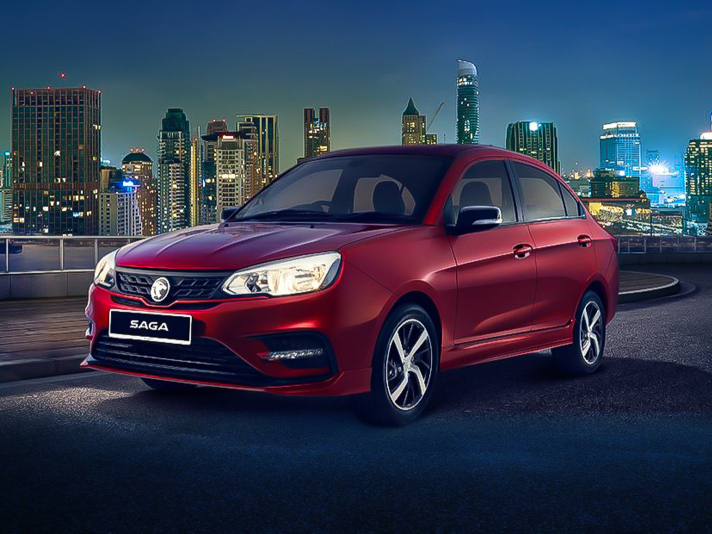
Proton Saga Interior Review: Affordable Yet Stylish for Everyday Use
WilliamJul 17, 2025
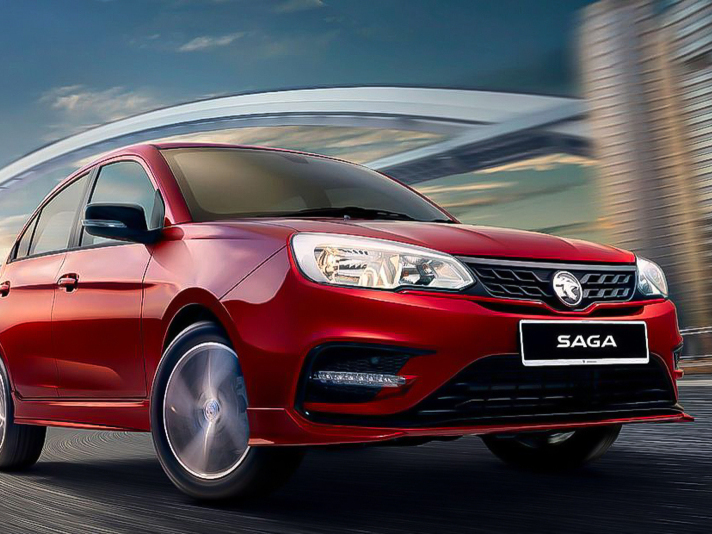
2025 Halfway Mark: All-New Proton Saga Coming Soon!
JohnMay 30, 2025
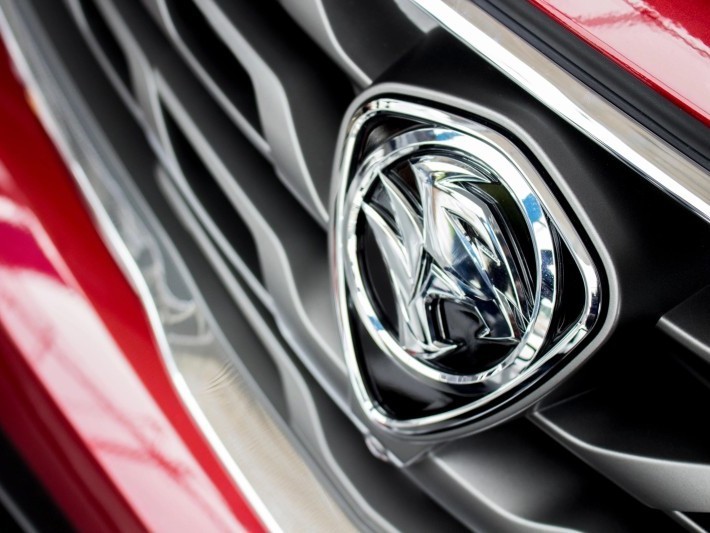
Proton Recorded Sales of 13,918 Vehicles in March, Marking a Significant MOM Increase of 23.9%
AshleyApr 10, 2025
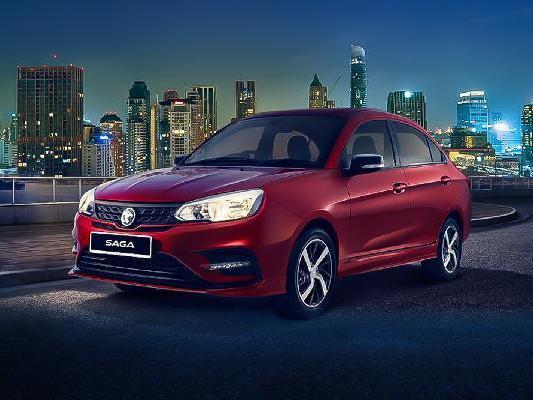
Proton Saga: A Clear Overview of Configurations and Costs of models
LienMar 25, 2025
View More






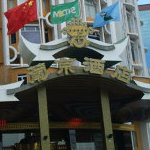





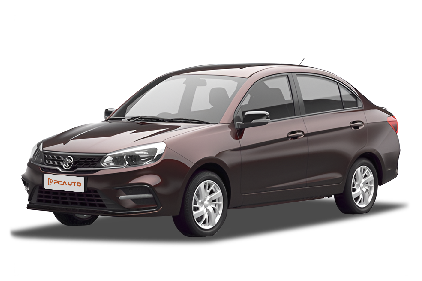





Pros
Cons